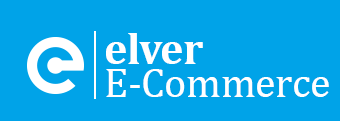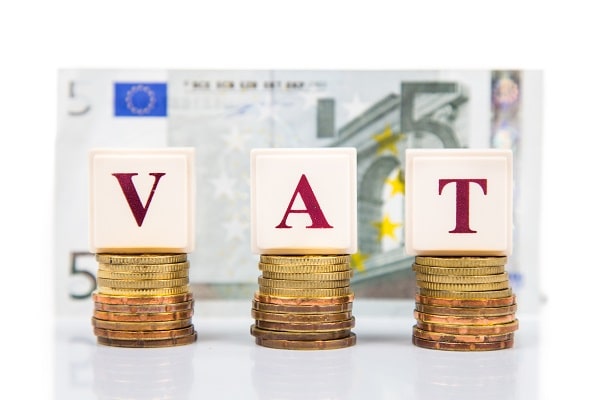Navigating the world of taxation can be like steering a ship through a storm, especially for small and medium-sized e-commerce ventures in the UK. The lighthouse in this storm? A solid understanding of VAT rates. This article will provide you with a clear understanding of VAT rates in the UK, including how they are calculated and how they apply to different goods and services.
What is VAT and What are the Current VAT Rates in the UK?
VAT, or Value Added Tax, is a consumption tax levied on most goods and services in the UK. It’s important for e-commerce business owners to know the different types of VAT that may apply to their products and services.
Standard VAT
The standard VAT rate in the UK is currently 20%. The standard rate of VAT is applicable to most goods and services in the United Kingdom. Whilst the current rate of VAT is currently 20%, this hasn’t always been the case and since the inception of VAT in 1973, the standard rate of VAT has been changed several times.
Reduced VAT
The reduced rate of VAT in the United Kingdom is 5%. This lower rate is applied to certain goods and services that are considered essential or socially beneficial. Some examples include children’s car seats, home energy, and sanitary products.
This category is not as broad as the standard rate category, but it does have a significant impact on certain sectors. For instance, the energy sector, where the reduced rate applies to domestic fuel or power, or the health industry, where it’s applied to certain medical equipment for disabled people.
For organisations operating in these sectors, understanding the reduced VAT rate is crucial for accurate pricing and tax reporting. It’s also important to be aware of any changes to the list of goods and services that qualify for the reduced rate, as changes can occur based on policy shifts or new legislation.
For e-commerce, the complexity can increase when selling these goods and services across borders, as different countries may have different rules about what qualifies for reduced rates.
Mixed-rate VAT
This is perhaps the least common VAT rate to be applicable. It is however important to be aware of as it is one of the more complex elements of VAT. Mixed-rate products are items that involve elements taxed at different rates. A classic example is a children’s activity pack that contains a book (zero-rated) and a toy (standard-rated).
These mixed-rate products pose a challenge because they don’t fit neatly into a single VAT category. If your e-commerce operation sells mixed-rate products, you’ll need to calculate VAT based on the separate rates for each component. Amazon, for instance, does not recognise mixed rates.
Zero rate
There’s also a zero rate which applies to certain items like most food and children’s clothes. Although no VAT is charged to the customer, these sales still have to be recorded and reported on your VAT return. It is therefore important to note that zero-rated sales do still count towards the business reaching the VAT registration threshold.
Whilst this may seem straight forward enough, the rules on what items qualify for zero-rated or standard-rated can be very detailed and therefore complicated. Let’s take a biscuit as an example. You might assume that biscuits are all created equal when it comes to VAT. However, the rules on this area alone are actually quite complex. If the biscuit is plain, it’s zero-rated but if you cover it in chocolate, it’s then considered to be a luxury good and subject to standard-rate VAT! To complicate matters further, if you were to instead put chocolate chips within the biscuit, then it wouldn’t count as a luxury good and you could still zero-rate the biscuit. Finally, to top off the complexity of biscuit VAT, if you were to instead only partially cover the biscuit in chocolate, it would still be zero-rated.
How is VAT Calculated?
VAT calculation can feel like trying to solve a complex equation. But once you understand the formula, it becomes much simpler. Let’s imagine John, an e-commerce business owner who sells handcrafted furniture. His business is registered for VAT, and the items he sells are subject to the standard rate (20%).
John sells a dining table for £1,000. The VAT he has to charge his customer is £1,000 x 20% = £200. Therefore, the total cost for the customer is £1,200. John will then include the £200 VAT on his next VAT return, which will be paid to HMRC.
Getting the hang of the VAT rates and the calculations involved is a major step towards effective financial management for your e-commerce business. Remember, at Elver E-Commerce Accountants, we specialise in providing accountancy services to e-commerce businesses like yours. You won’t need to spend time explaining your Amazon business to us or showing us how to get e-commerce data. We know the tune and can harmonise with your business needs.
E-commerce businesses are much more likely to be exposed to international VAT and GST, and we can deal with that too. Let us take care of the complex notes so you can focus on running your business.
UK VAT FAQs
1. Who is required to register for VAT?
A UK based business is required to register for VAT once they make VATable sales in a 12 month rolling period in excess of £85,000 (as at 2023). For an overseas based business fulfilling from outside the UK and selling directly to local consumers, if the individual order values are less than £150, then the overseas business will need to register for VAT from the date of the first sale. The £85,000 registration threshold does not apply in these circumstances. This is also the case where a United Kingdom based business is fulfilling orders to local customers using stock held overseas at the time the order is placed by the customer (a common example of this being when a British business is using an overseas dropshipper). If an order is valued at more than £150 then this must pass through customs and is assessed for VAT (and potentially duties) at that point.
2. When are businesses required to register for VAT?
For a UK based business that has breached the £85,000 threshold in a 12 month rolling period, they will be required to register for VAT from the 1st of the 2nd month after the month in which they hit the VAT registration threshold. For example, if a business breached the threshold in July, a VAT registration would be required from 1st September.
3. What items are exempt from VAT?
Whilst not covered in the rates mentioned above, it is also possible for items to be exempt from VAT. A good example of this would be the sale of insurance or education services. The key difference between zero-rated and exempt sales is that businesses that are making zero-rated supplies can reclaim VAT on the expenditure they incur in providing the zero-rated supplies. However, a business providing exempt supplies is unable to claim back VAT incurred on the expenditure they incur.
4. What items are outside the scope of UK VAT?
It’s possible for items to be entirely outside the scope of British VAT and therefore not need to included on your return at all. A good example of this would be an organisation fulfilling orders to a customer based overseas where the goods being sold are also located overseas at the point of sale. A transaction of this nature would entirely be outside of the scope of the United Kingdoms VAT regime. It’s important to note however that it would likely be subject to VAT in the country that the customer is located in or the country that the goods are located in at the point of the sale, depending upon the specific circumstances of the transaction.
How Can Elver E-Commerce Accountants Help With Your VAT Rates?
Navigating the intricate maze of VAT regulations can be an overwhelming task. It’s a bit like piloting a ship through stormy seas – you wouldn’t do it without an experienced captain at the helm. That’s where Elver E-Commerce Accountants come in.
We specialise in e-commerce accounting, meaning we’re not just accountants – we’re e-commerce experts. We understand the unique challenges you face and can provide the targeted, relevant advice you need to guide your business to calm waters. Whether you’re a start-up setting sail for the first time or an established company navigating the high seas of global e-commerce, we’re here to ensure your journey is smooth and successful.
At Elver E-Commerce Accountants, we’re not just about numbers – we’re about people. Our client relationships are partnerships: we work with you, not just for you. We’re committed to understanding your business inside-out so we can provide the best possible service.
From deciphering VAT rates to managing mixed-rate products, we’ve got you covered. We’ll ensure your VAT return is accurate, timely, and compliant, freeing you to focus on what you do best: growing your e-commerce business.
Don’t set sail on the VAT sea alone. As VAT accountants for e-commerce businesses, our service is designed to support and assist your business. Get in touch with us today, and let us chart a course to success together on 01942 725419.


